Image above: A walrus skull found on the north beach, West Spit – see the November 17th post.
Series No.4, Zoe’s daily Facebook posts from Sable Island, beginning on October 26, 2021.
Posted on Facebook, November 28, 2021
I left Sable Island yesterday. The Vision Air helicopter took off just after 1:00 pm, and flew along the south side of the island at an altitude of about 700 feet before ascending to 1000 feet above sea level to avoid stronger headwinds. This photo provides a view of the north and south sides of the island (north beach is at the top of the image).
The wave climate of Sable Island is dominated by ocean swell from the south, and the south side of the island generally sees much larger wave action than the north side. Surf conditions were particularly energetic during and following last week’s storm (see the photo of waves posted on November 24). Although the more turbulent south side surf is obvious when viewed from the beach, it was astounding to see the surf conditions from the air—the scale of the churning, charging, frothing, and rolling waves. The difference in the colour of the ocean on the north and south sides is due to the optical effects from the different viewing angle, turbulence, etc.
Thank you to all who visited the SII’s Facebook page—your interest, enthusiasm, and comments are much appreciated. And thanks also to Parks Canada for logistic support, and to Dave Johnston and Tim L’Esperance of Vision Air Services. Although I spent seven months on the island in 2021, I was not able to resume the series of daily posts until late October.
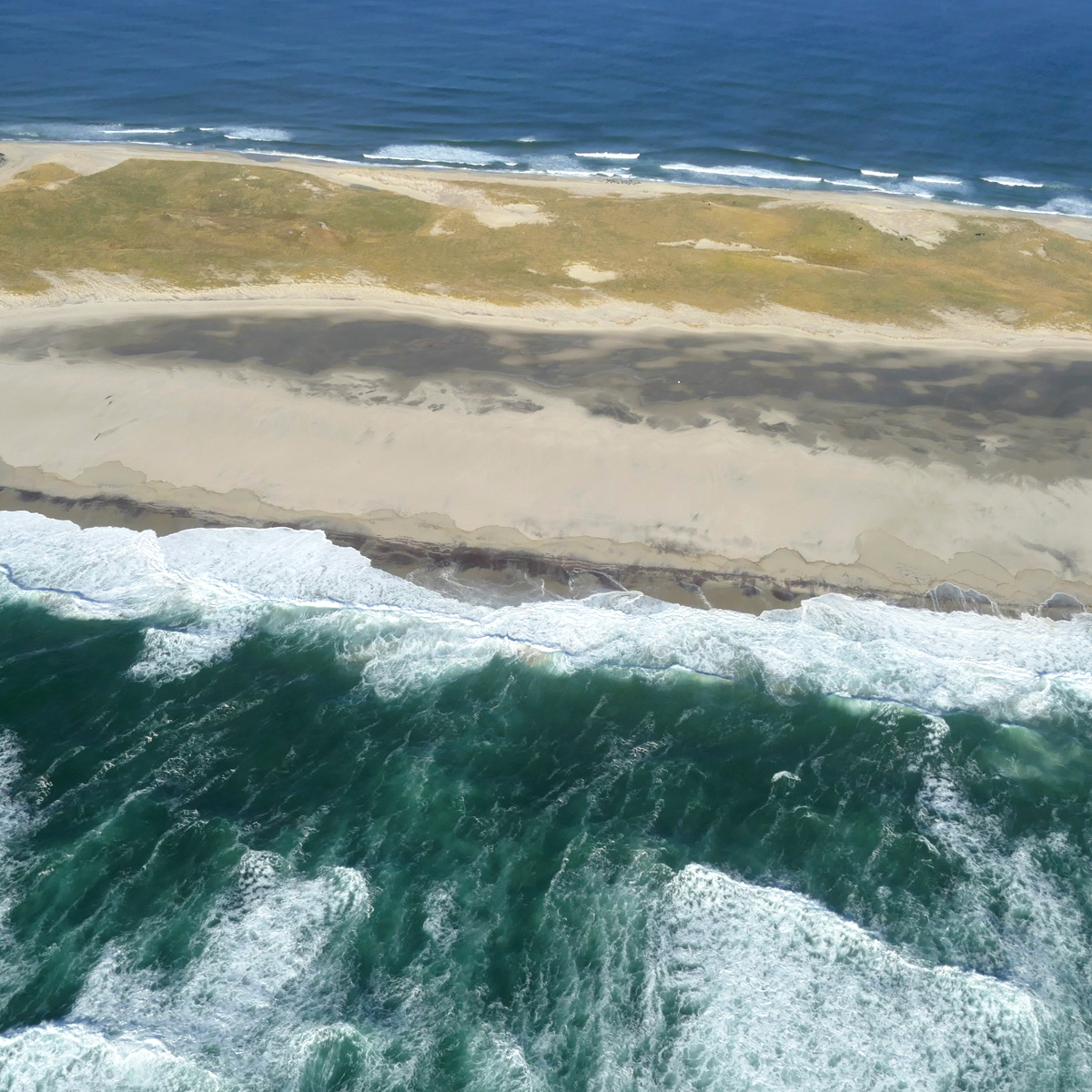
Posted on Facebook, November 26, 2021
Fair weather on Sable Island. For most of the day the sky was clear, the wind was light (about 10 knots east-southeasterly), and the maximum temperature was 12°C. After walking along the north beach, a family band of horses comes in through a break in the dune line, heading to Mummichog Pond to drink.
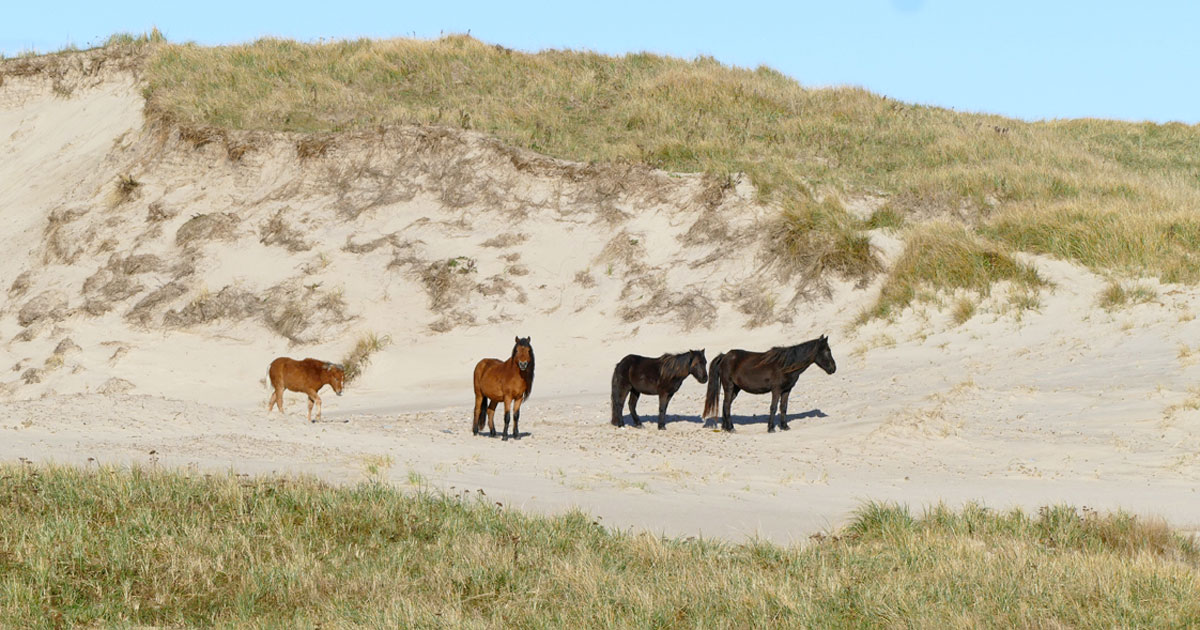
With the bay stallion are a dark brown mare and her chestnut colt, and a dark brown immature male. The pond was named for the mummichogs, a small killifish (Fundulus heteroclitus), which are abundant in most of the ponds near West Light. This is the westernmost freshwater pond on the island.
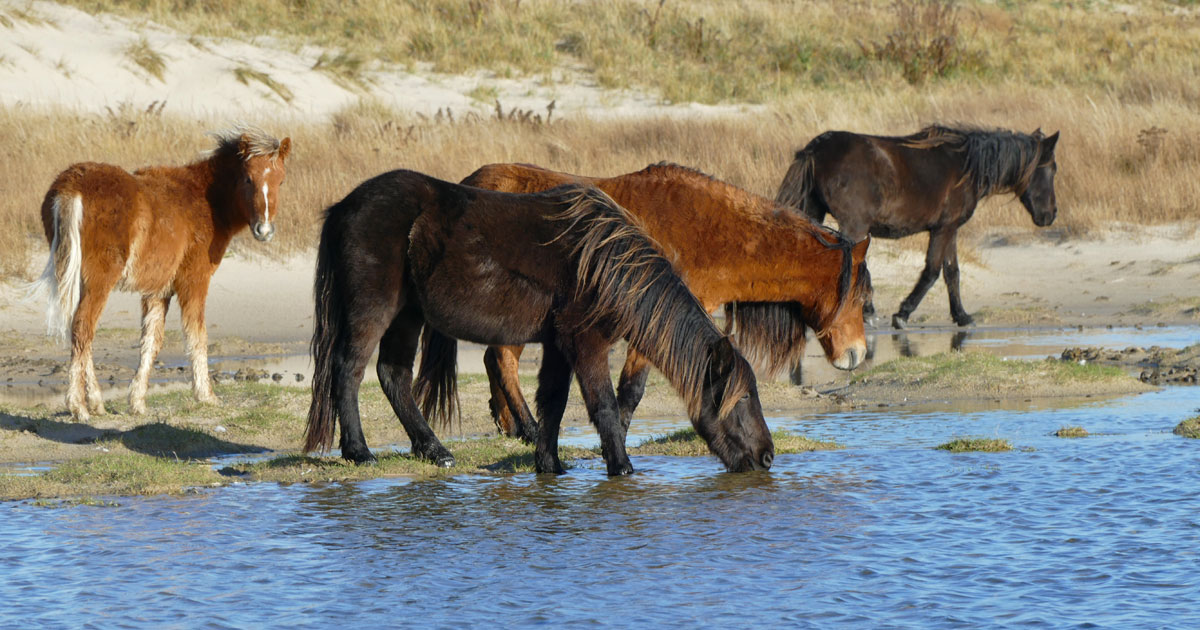
Posted on Facebook, November 25, 2021
After the high winds and heavy rain, today’s weather on Sable Island was relatively calm. Especially this afternoon with a maximum temperature of 10.3°C, a light breeze (about 10 knots westerly), and a bright, thin fog. During most of the afternoon a fog bow arched across the sky. This view towards the station creates the illusion that the bow lights up the iconic white dome on what was the operations building of the Meteorological Service of Canada. A fog bow is similar to a rainbow—both are formed when sunlight meets water droplets suspended in the air and light is refracted. The water droplets that cause fog are very small, so a fog bow has only weak colours and often appears white.

A peaceful day, and a band stallion stops to drink at a pond. All the freshwater ponds are brimming following the >60 mm of rain that fell during the storm.
Posted on Facebook, November 24, 2021
At Sable Island during the storm, the wind peaked at 57 knots (105 km/h), 61 mm of rain fell, and the maximum temperature was 14.8°C. This morning the wind dropped to below 20 knots. However, with heavy surf pounding along the shoreline, the ocean was flooding over the berm and across the south beach. The island has a dramatic history of shipwrecks, loss of life, and rescues, and for about 200 years was widely known and dreaded as “The Graveyard of the Atlantic”. The life-saving station—the Sable Island Humane Establishment—began operation in 1801.
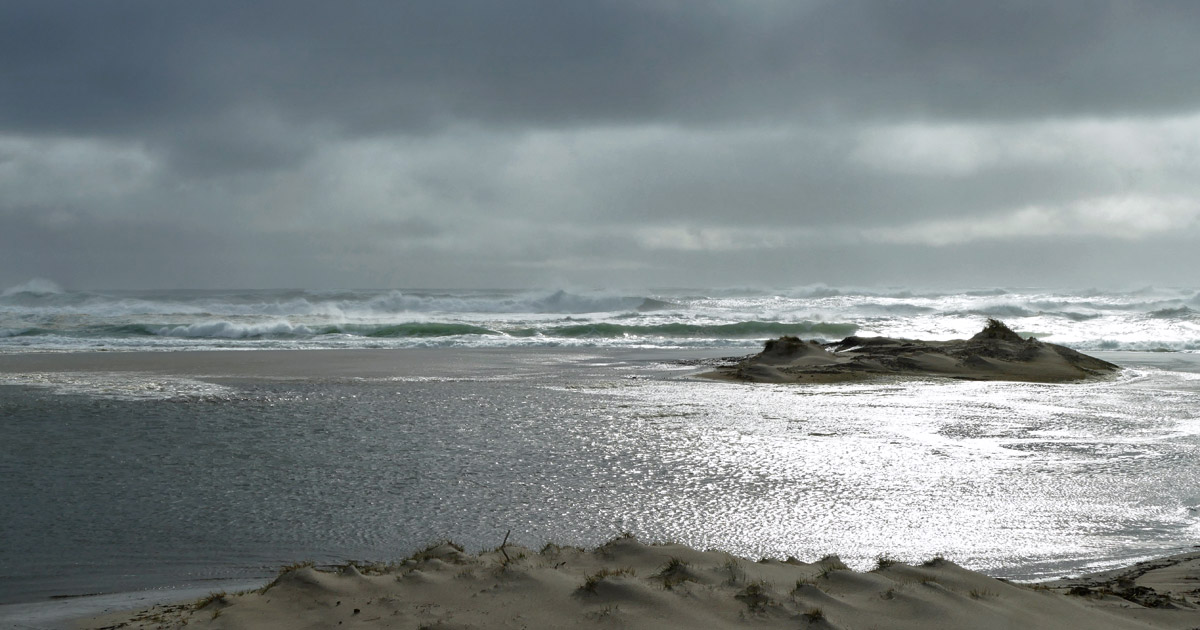
When ships were wrecked during storms, the life-saving crews had to battle the wild waves (sometimes at night). However, there were times when conditions were so extreme that there was nothing they could do except search the beach for lifeboats and survivors cast ashore and provide sanctuary and care for the exhausted, frightened, grieving, and sometimes injured people. The SIHE was phased out in the mid-1900s when modern technology and aids to navigation greatly reduced the risk of shipwrecks.

Posted on Facebook, November 23, 2021
It’s stormy on Sable Island. So far, southeasterly winds have been gusting to 51 knots (94 km/h), there’s been 13.2 mm of rain, and the temperature peaked at 13.4°C.
During fair weather two days ago, three members of a family band—the stallion, and a mare and her five-month-old offspring—were in a chummy-looking huddle. When the two adults began a mutual grooming session, the youngster had trotted over to join them. They and their four other bandmates will have spent much of today standing in the lee of a west- or northwest-facing slope, keeping out of the wind and blowing sand, but getting wet. The heavy rain and high winds are forecast to end tomorrow morning. The horses will be more comfortable as they forage for beach grass, pea, and rosehips, and their coats will dry. Days of better weather are in the forecast: lighter wind, broken cloud and sunshine, and temperatures just above and below 10°C.
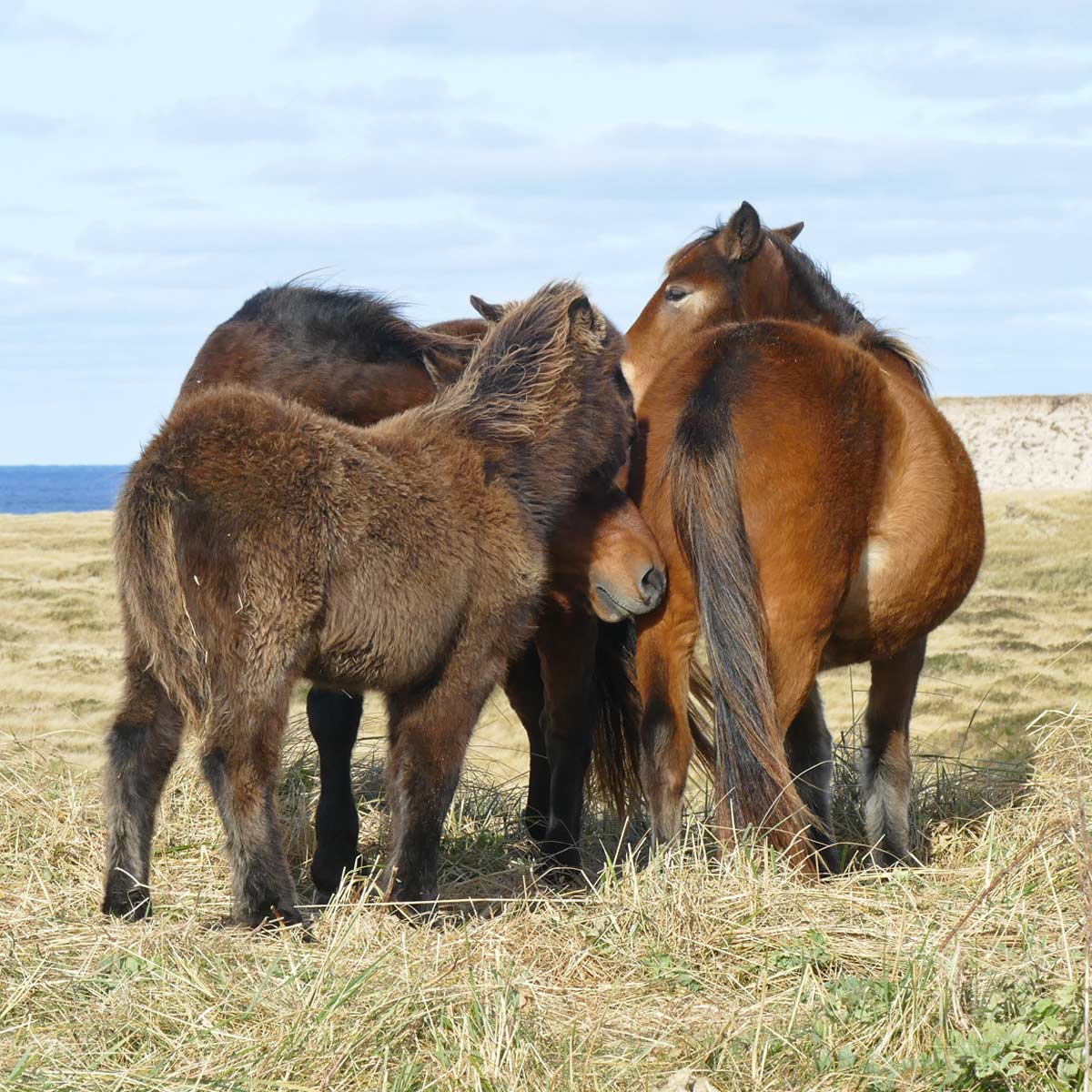
Posted on Facebook, November 22, 2021
A view of the Sable Island Station (a few buildings are outside the frame) with south beach in the distance. Heavy rain is in the forecast for tomorrow, but today was partly sunny, with a maximum temperature of 11.3°C, and a southeasterly wind gusting to 30 knots and increasing.

Ipswich Sparrows begin their fall migration in late September, but there are at least a few hundred sparrows still on the island, and some of them might overwinter here. A banded Ipswich, who has been feeding on beach grass seeds near the station, is perched in the driftwood thicket. Although the thicket provides some shelter, the sparrow might be a little soggy by this time tomorrow evening.
Posted on Facebook, November 21, 2021
Soon after the pile of cable came ashore, the Sable horses discovered that it provided some good rubbing and scratching opportunities. After earlier posts featuring toys, lighters, and tiny nurdles, the huge tangle of cable is an example of the scale and role of plastics in every aspect of our lives, and throughout the environment.
Removing the cable was considered, but at the time there were both safety concerns and a lack of resources available (personnel and equipment) on the island. Even now it would be a challenging operation, and as with any clean-up project the benefits would have to be weighed against the environmental costs (e.g., disturbance and emissions). Some visitors have been dismayed by the amount of plastic debris on the island, however it is an important part of the experience. What we see on Sable shows us what’s out there in the ocean, and visitors help by sharing their observations with others.
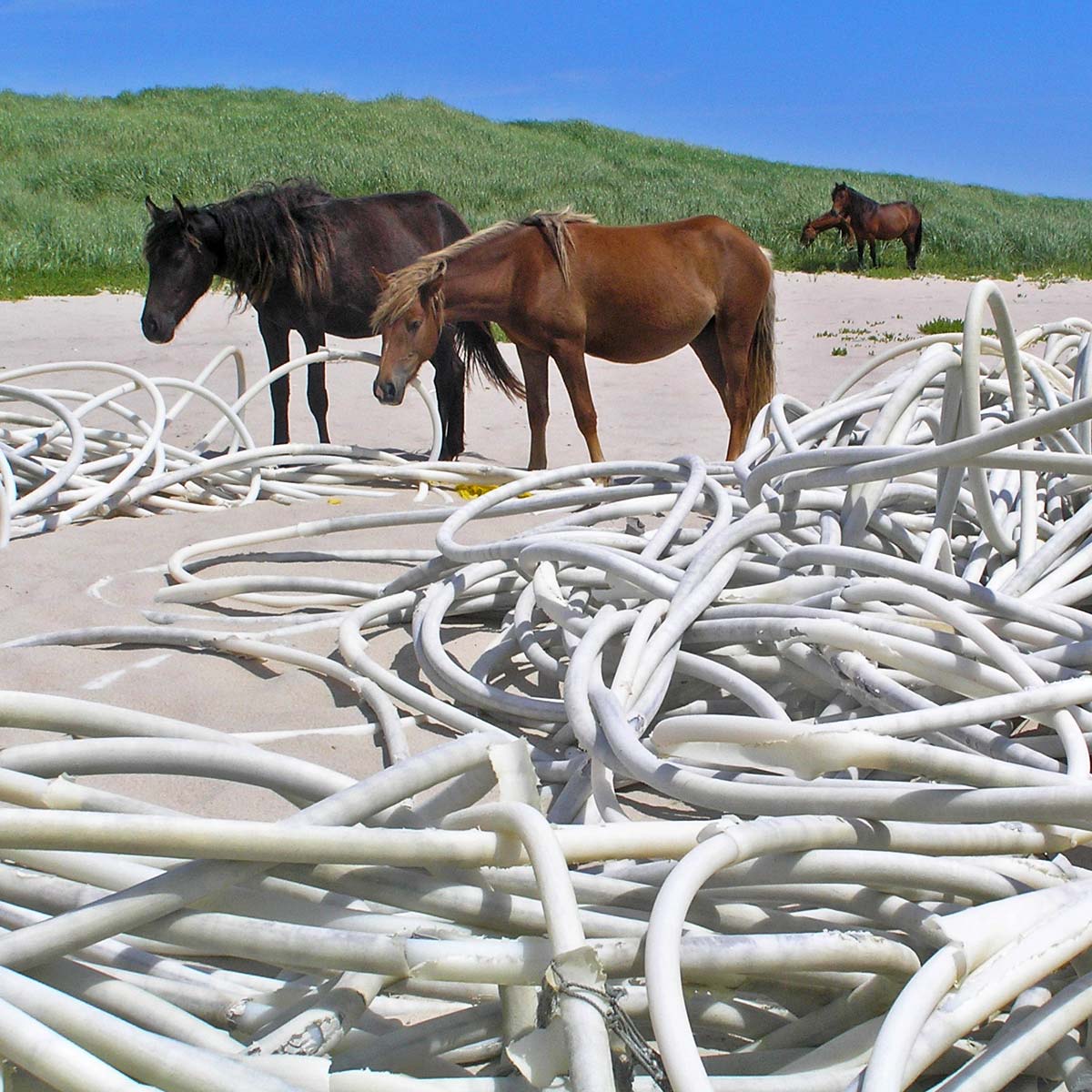
Posted on Facebook, November 20, 2021
Beached plastic items are far more abundant than glass floats, walrus skulls, shipwreck fragments, and the many other wonders that can be encountered on Sable Island’s shoreline. Large plastic objects such as crates, bins, and chairs are common, and occasionally chest freezers and refrigerators are cast up by the waves (about 30-40% of a refrigerator’s total weight may be made up of plastics). Twenty years ago, a huge tangle of communications cable was beached on the island. Since then, it has been partly buried by sand, with more or less of the tangle being exposed by storm waves and winds. There is a large amount of plastic in this cable. Plastics are used for the sheathing and as an insulator, and as the cable ages the materials split and break, shedding fragments into the environment… as does all the other plastic debris on the island and in the ocean.

Since then, it has been partly buried by sand, with more or less of the tangle being exposed by storm waves and winds. There is a large amount of plastic in this cable. Plastics are used for the sheathing and as an insulator, and as the cable ages the materials split and break, shedding fragments into the environment… as does all the other plastic debris on the island and in the ocean.
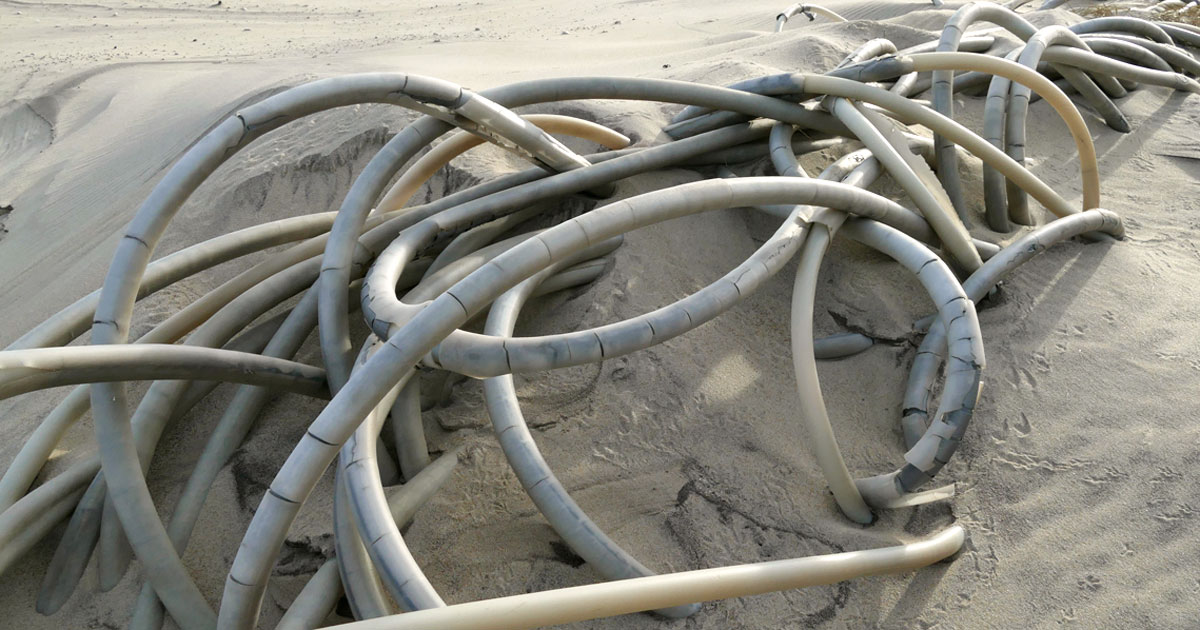
Posted on Facebook, November 19, 2021
Glass floats, from old fishing nets and lines, occasionally turn up on the beach. While some could have been drifting in the ocean for decades, many of those found on Sable Island probably came ashore long ago, disappeared under developing dunes, and then rolled back into the surf as erosion exposed and released buried materials. Most (like this one just washing ashore yesterday) have been 12-13 cm in diameter and bottle-green in colour. Other colours include pale lavender, very light blue, and golden green. Most lack markings. But some are embossed with “Made in England”, or symbols such as three crossed fish, an anchor, or a clover-like design. The latter was used by the Herman Heye Glassworks in Germany, and this was the mark on yesterday’s float.
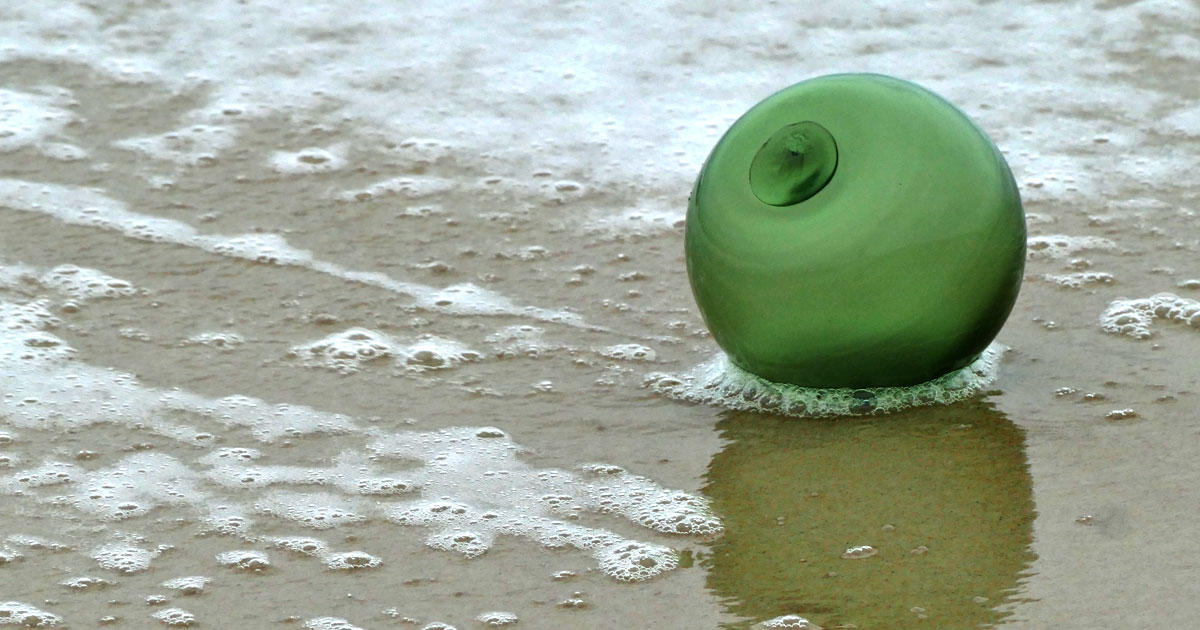
The glass floats strung together and suspended in the afternoon sunlight on Sable in 2003 were mostly found during the 1980s & 1990s.
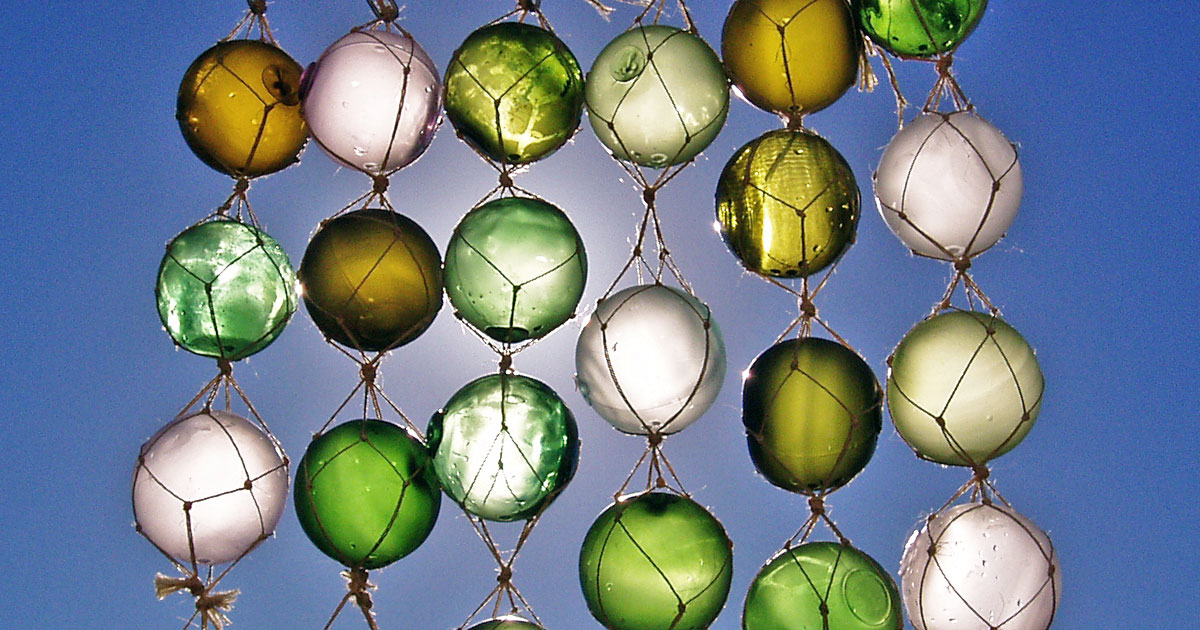
Posted on Facebook, November 18, 2021
A cool and overcast day on Sable Island, with a maximum temperature of 9.0°C, southerly wind peaking at 26 knots, and 0.3 mm of rain. Groups of Grey Seals are hauled out on the beach along the north and south sides of the island. The numbers are increasing as the seals gather for their pupping and breeding season in December and January.

This is the largest Grey Seal colony in the world, and there are many 1000s of skeletal remains scattered over the island. A close view of a sun-bleached Grey Seal skull shows the teeth in the upper jaw. On each side there are 3 incisors, 1 canine, and 5 postcanines, for a total of 18 upper teeth. The lower jaw has only 2 incisors on each side (total 16 lower teeth).

Posted on Facebook, November 17, 2021
A walrus skull on its side and partly buried, and then pulled up out of the wet sand. This skull was found yesterday afternoon on the north beach near the western end of Sable Island. Skeletal remains of the island’s walrus population—mostly skulls, tusks, and lower jaws—are occasionally cast up on the beach, usually after big storms.

These bones and tusks are at least 100s of years old. Walrus have not been seen on the island since the 1700s. They had been heavily hunted for their ivory-like tusks, blubber, and thick hide. Research led by Brenna McLeod (Saint Mary’s University, Halifax) suggested that Sable’s walrus were part of a now-extirpated Maritimes population that was “a morphologically and genetically distinctive group that was on a different evolutionary path from other walrus found in the north Atlantic”.

Posted on Facebook, November 16, 2021
A day of high winds (peak 41 knots), broken cloud and bursts of sunlight, and occasional brief downpours (total 1 mm, so far). The maximum temperature was 10.4°C. A family band of three Sable horses—stallion (face stripe), mare, and female yearling (tucked in behind the stallion)—spent some hours resting in the shelter of a small hill.

Warmed by sunshine, the horses looked drowsy with eyes half-closed, but they roused themselves to forage in this area of rich vegetation cover: marram and fescue grasses, bayberry, blueberry, Virginia Rose (the wild rose), Pearly Everlasting, and Starry false-Solomon’s Seal. The yearling’s thicker coat is damp, taking a little longer to dry in the sunlight.
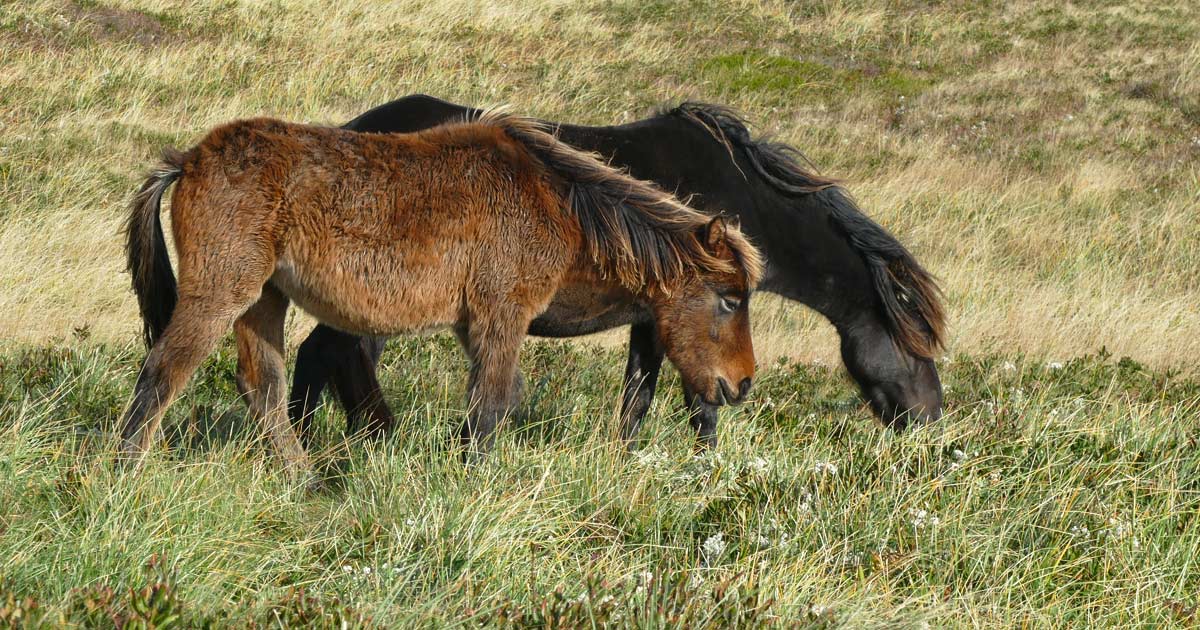
Posted on Facebook, November 15, 2021
North beach at low tide with the whistle buoy hull in the distance. The Sable Island shoreline looks free of debris, but higher up the slope are many plastic pieces and items where high tides and storms waves cast them ashore.
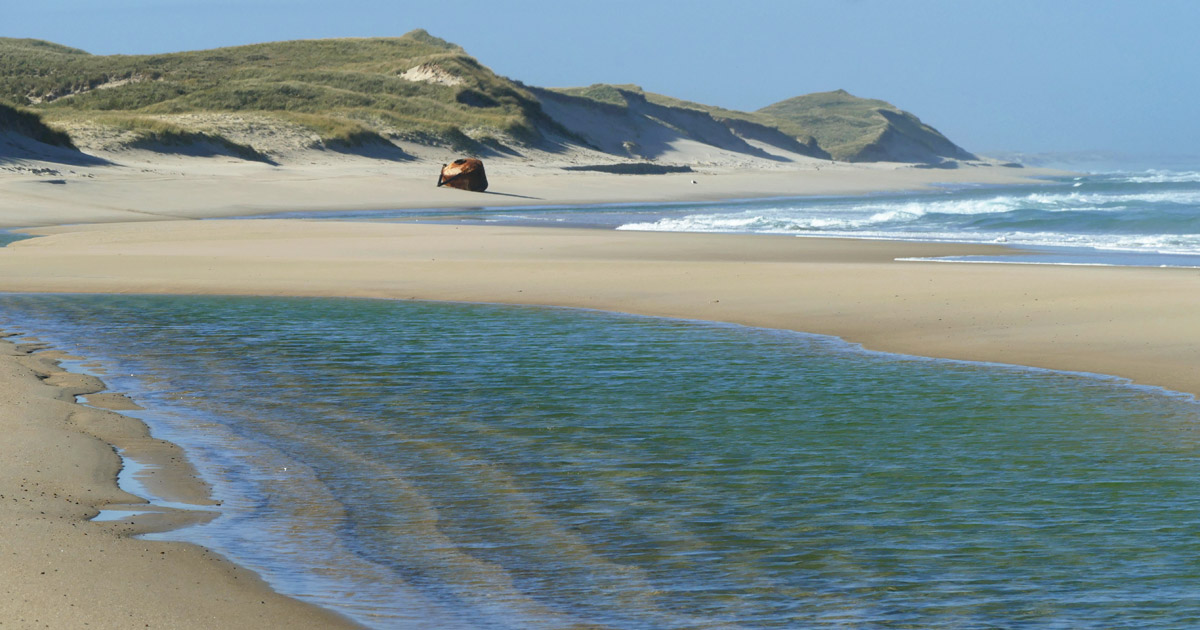
Today’s featured debris type: disposable lighters. Although not collected as part of the brand audit program, lighters were picked up when noticed. Of the 117 found, 69% are BIC, and 1 each of Cricket, Torch, and Marlboro. The others were not identified. Some are heavily sandblasted and/or corroded and would have been in the environment for some time. The total amount of plastic in the 117 lighters is about 1 kilogram.
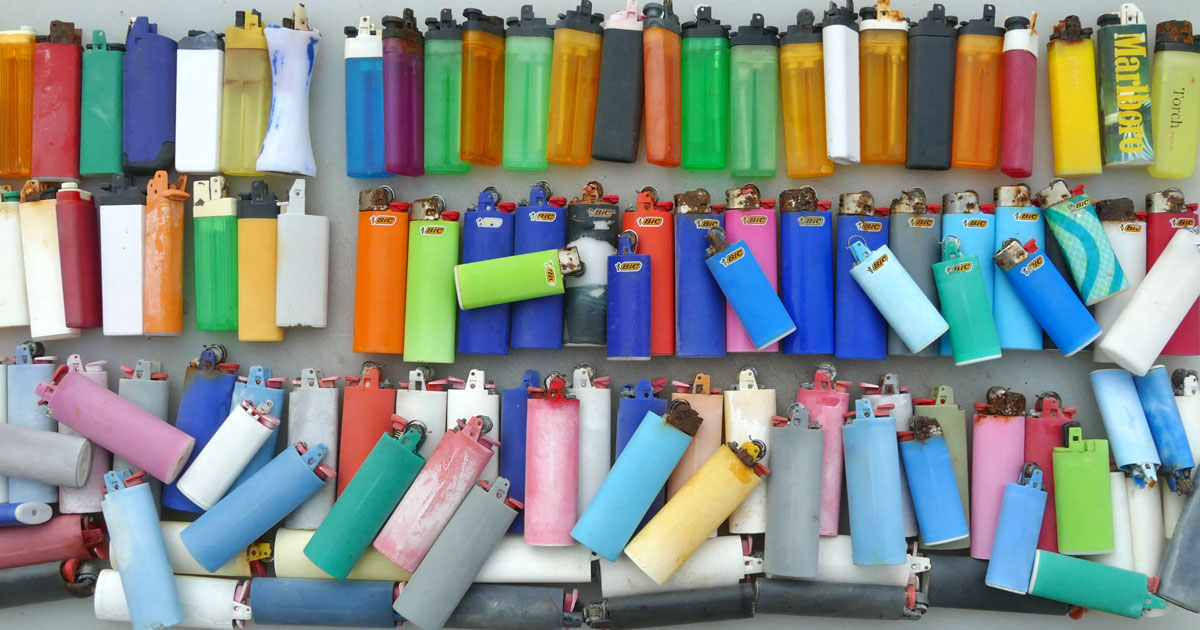
Posted on Facebook, November 14, 2021
Sable Island’s weather today was sunny with scattered clouds, mild (maximum temperature 14.4°C), and windy (southwesterly wind peaking at 39 knots). No rain. An all-male group of horses is grazing in a field of marram and beach pea just inside the north beach dunes. Although the strong wind is whipping up white caps on the ocean, the horses’ grazing area is sheltered by surrounding higher terrain.

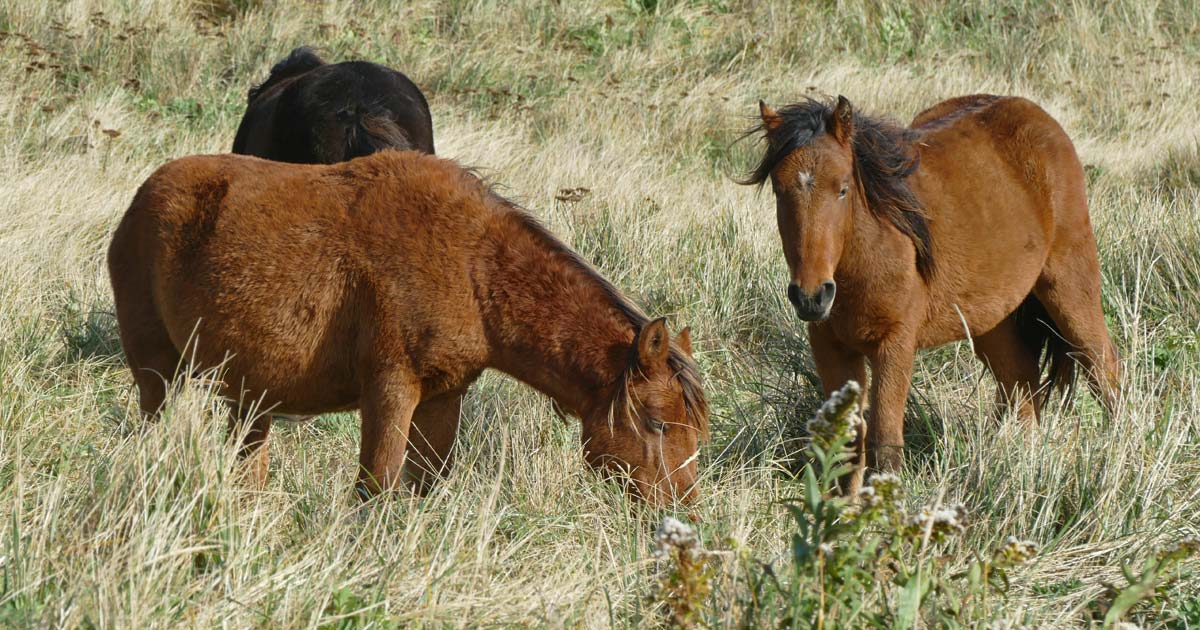
Posted on Facebook, November 13, 2021
A soggy, windy and overcast day on Sable Island: maximum temperature 14.4°C, southeasterly wind peaking at 41 knots, and 5.5 mm of rain (so far). Although seldom seen elsewhere on the island, the white-lipped snail (Cepaea hortensis) is abundant in vegetation around buildings and other structures at the Sable Island Station. It is active day and night, and in damp or wet conditions 100s of snails move over artificial surfaces such as the concrete paths and boardwalks at the station. The snail has considerable variability in shell colour and banding, although it is most commonly yellowish, with or without brown banding.

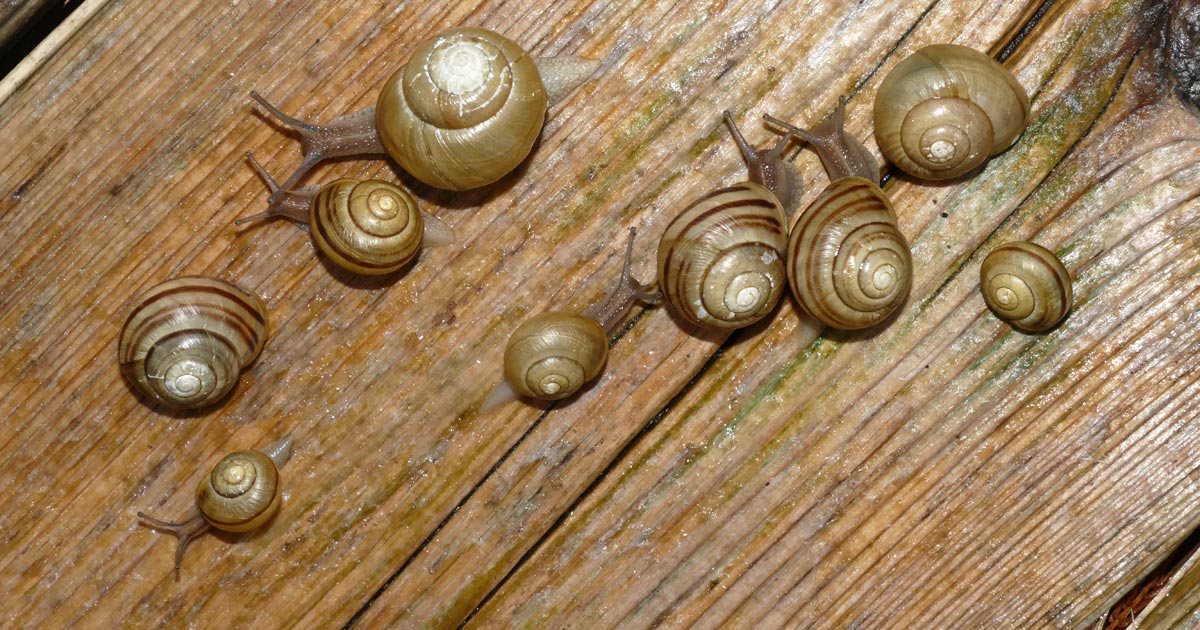
Posted on Facebook, November 12, 2021
Although its position sometimes shifts during storms, this large and rusty hull of a buoy is a conspicuous landmark on Sable Island’s north beach—seen here four days ago. It is all that remains of a whistle buoy that washed ashore on the island in 2009 (see below). The whistle apparatus and the long hollow leg eventually broke away, and some fragments are half-buried in areas higher up on the beach. Before ending up here, this whistle buoy had been an offshore hazard marker. It was located at the mouth of Indian Harbour just down the shore from Cape Canso. The buoy would have drifted about 100 nautical miles to reach the island.
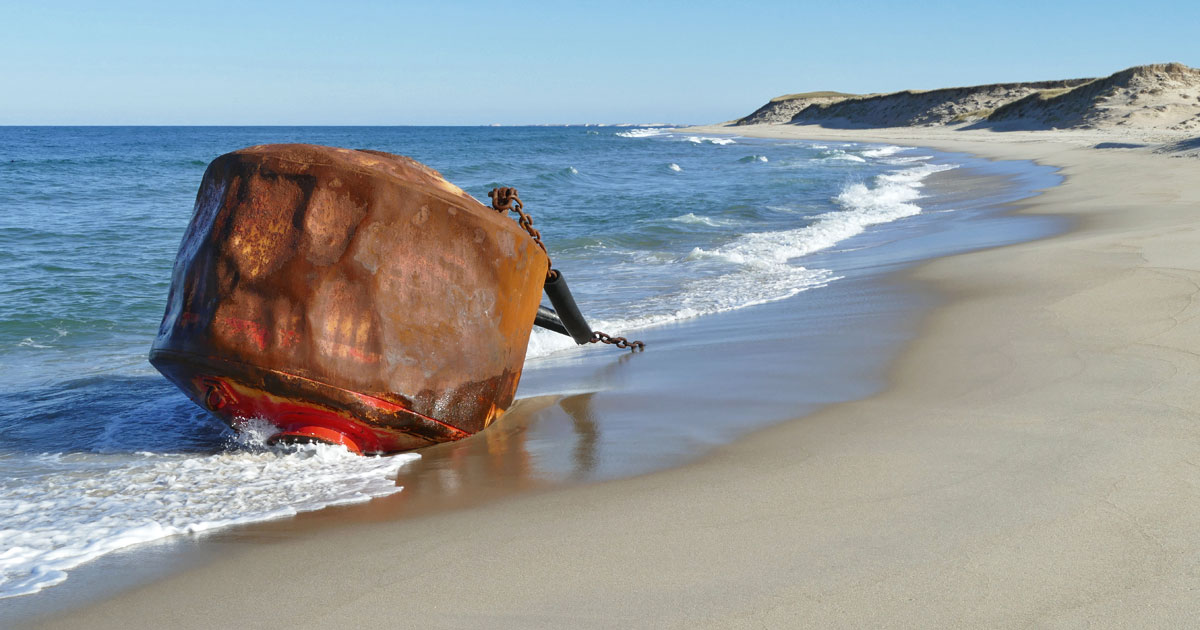

Posted on Facebook, November 11, 2021
November 11, 2021, Remembrance Day.
It’s been chilly and windy on Sable Island with a maximum temperature of 8.7°C and northwesterly winds gusting to 40 knots (74 kph). A day for indoors work. This photo was taken earlier, during a less blustery afternoon. A member of all-male group is standing on north beach and waiting and watching as his companions, ambling along the water’s edge in the distance, catch up.
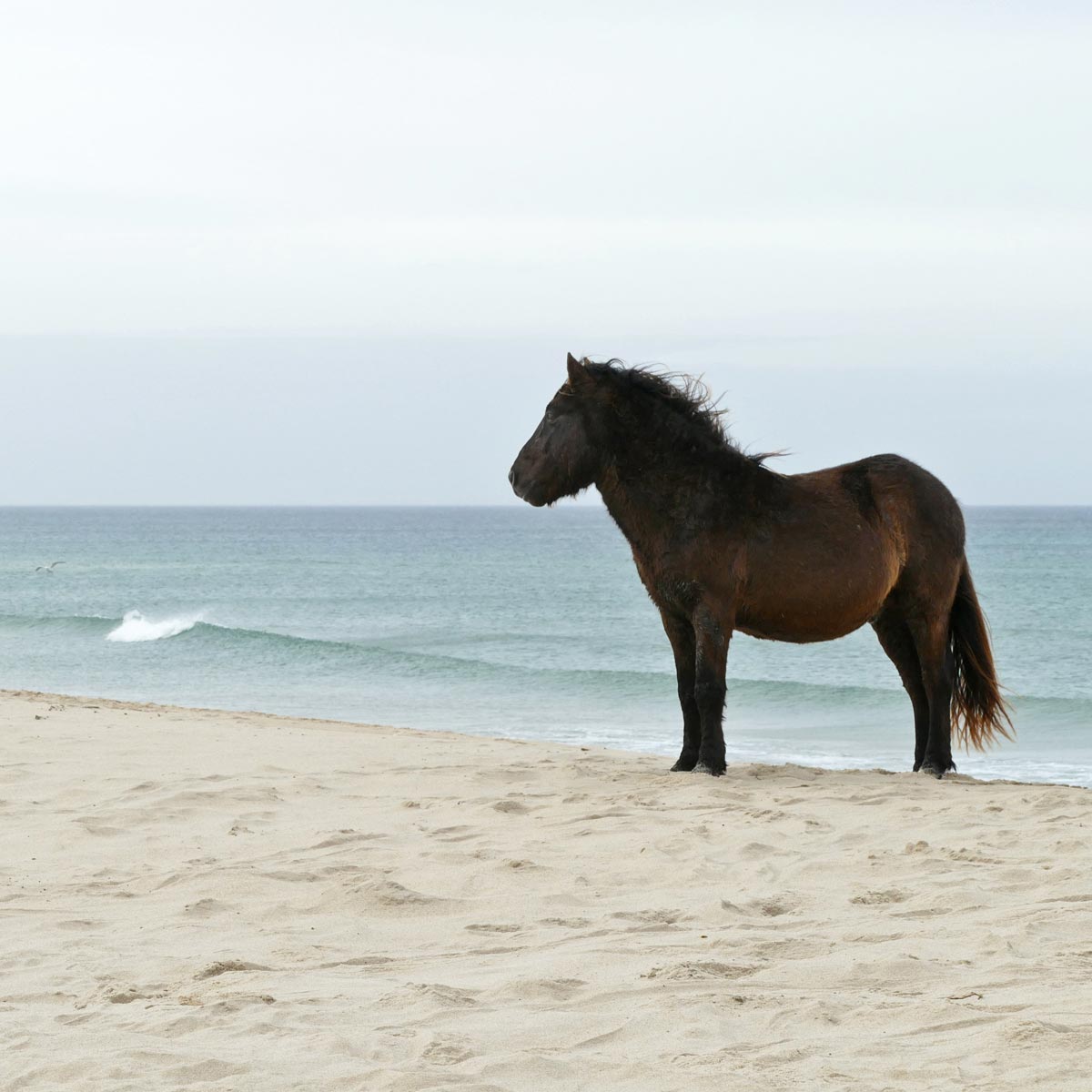
Posted on Facebook, November 10, 2021
Ground fog on Sable Island early this morning. This form of radiation fog usually develops overnight under conditions of clear skies, light winds, and high humidity. The clear skies allow the ground to cool by radiation; the light wind means there is no mixing of the air near the ground; and the high humidity allows fog to form in the cooler temperature.
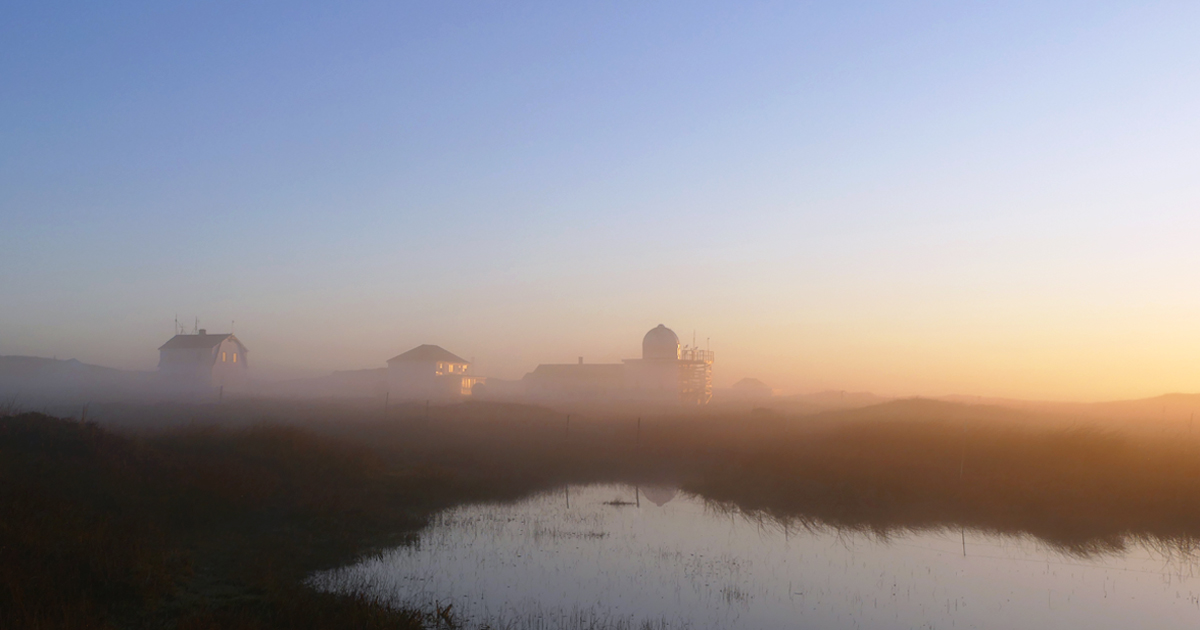
As the sun rose, the fog layer cleared, and the morning light burst into instrumentation field of the Reference Climate Station (Meteorological Service of Canada). One of the two rain gauges has a shield to minimize the effects of wind on the rain measurement. It consists of 32 steel leaves that hang freely and swing, slowing and deflecting the wind downward.

Posted on Facebook, November 9, 2021
A sense of scale on Sable Island: a view from the outer edge of south beach, looking across the floodwater toward the line of dunes along the inside of Wallace Flats (part of the Sandy Plain). The yellow arrow points to a few small dark spots. The photo below is a closer view of the area indicated by the arrow. The dark spots are horses, a family band of four resting at the base of the dune slope, warm in the sunshine.


Posted on Facebook, November 8, 2021
More fall colours on Sable Island. Stands of cordgrass (Spartina pectinata) are scattered in sandy habitats and in richly vegetated shrub-herb communities on the island. Its yellowed leaves gleam in late afternoon light. The horses may feed on the leaves when the plant is young, but as it matures, the leaves become tough, a little sharp, and unpalatable.

A White-throated Sparrow enjoys the sunshine in a sheltered area out of the wind. This species does not nest on Sable, but it is common in spring and fall, and is usually among the most abundant of the sparrows that turn up during the migration period.

Posted on Facebook, November 7, 2021
A mild November day on Sable Island, mostly sunny with scattered cloud, and a peak temperature of 11.8°C. During the afternoon and early evening, the dune grasses were gently rippled by a 10-knot southwesterly wind. The sunshine lit up some of Sable’s many fall colours. Starry false Solomon’s seal (Maianthemum stellatum) a member of the lily family, is native across North America, and common on the island. In autumn its foliage looks like bright golden flames flickering in the landscape.

The red berries of Winterberry (Ilex verticillata), a species of holly native to eastern North America, grows in shrub-herb and heath areas on the island. This species sheds its leaves in fall. For years, one sheltered stand of Winterberry was the tallest shrub on the island, about 150 cm high. However, during a few big storms last winter, windblown sand half-buried the plant.

Posted on Facebook, November 6, 2021
Grey Seals in the surf along the south side of Sable Island. The waves look clear and pristine, and indeed they are compared with the waters of many other regions. However, like everywhere else in the world’s oceans, there are huge numbers of small bits of plastic in the waters around Sable. Here, so far, they aren’t as obvious until some unusual conditions cause concentrations of floating debris—both natural and synthetic—in pools of ocean overwash on the beach or in cuts between the dunes.

This collection of plastic straws, lids, cigar tips, nurdles, and broken and burned plastic fragments was scooped out of a flood pool after a storm. Most of the round pieces of white and coloured plastic are 2 to 5 mm in size.

Posted on Facebook, November 5, 2021
During August 2021, 243 Ipswich Sparrows were banded on Sable Island. After the summer breeding season, Ipswich Sparrows migrate to their wintering grounds in the coastal regions of eastern USA. In spring they return to Sable. To understand the challenges affecting their survival, researchers are banding individuals both on Sable Island and in their wintering areas. Resighting surveys for banded sparrows provide insights regarding survival rates and potential threats during the Ipswich Sparrow’s life cycle stages. Coloured plastic bands are used in 100s of combinations to create a unique identification for each bird: one plastic colour band over an aluminum band on one leg, and three plastic colour bands on the other leg. Each aluminum band is stamped with a unique number.
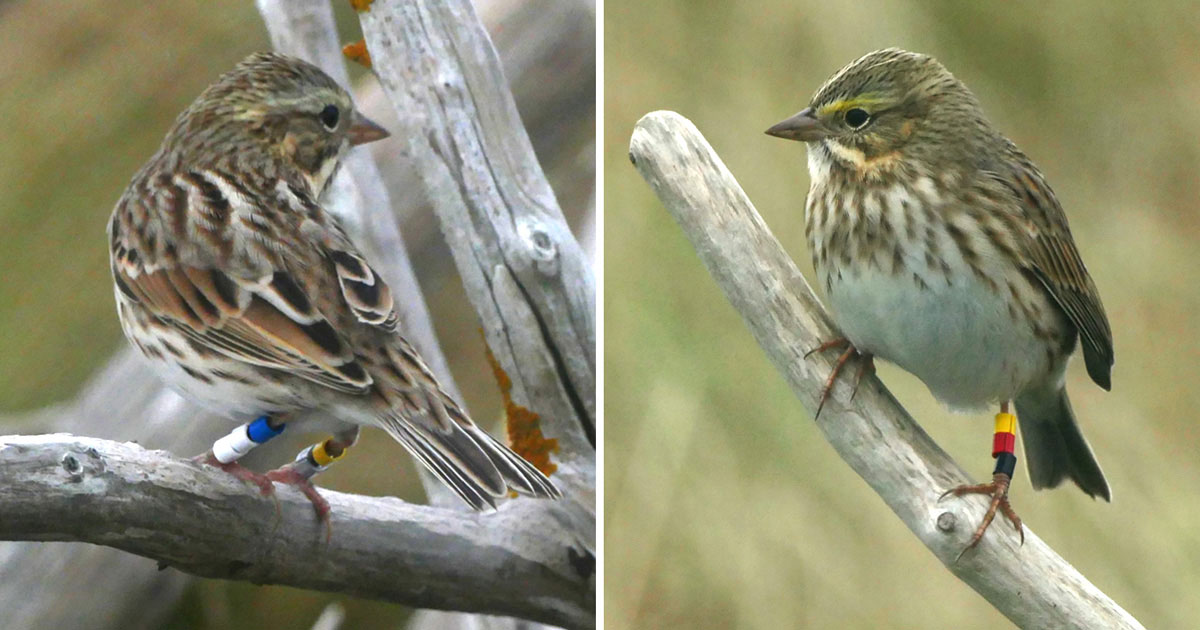

Posted on Facebook, November 4, 2021
Over a dozen shark species have been recorded in Scotian Shelf waters, and shark-bitten seals are commonly seen on Sable Island. However, dead sharks are not often found washed ashore on Sable. During the past 30 years a few corpses of Porbeagle, Shortfin Mako, Blue Shark, and the huge Basking Shark have been found on the beach. They don’t last long—they decompose quickly, and are scavenged by gulls. Recently, a very fresh Blue Shark (Prionace glauca) corpse, a young female, was cast up on the north beach. Herring and Great Black-backed Gulls had just started pecking at it.
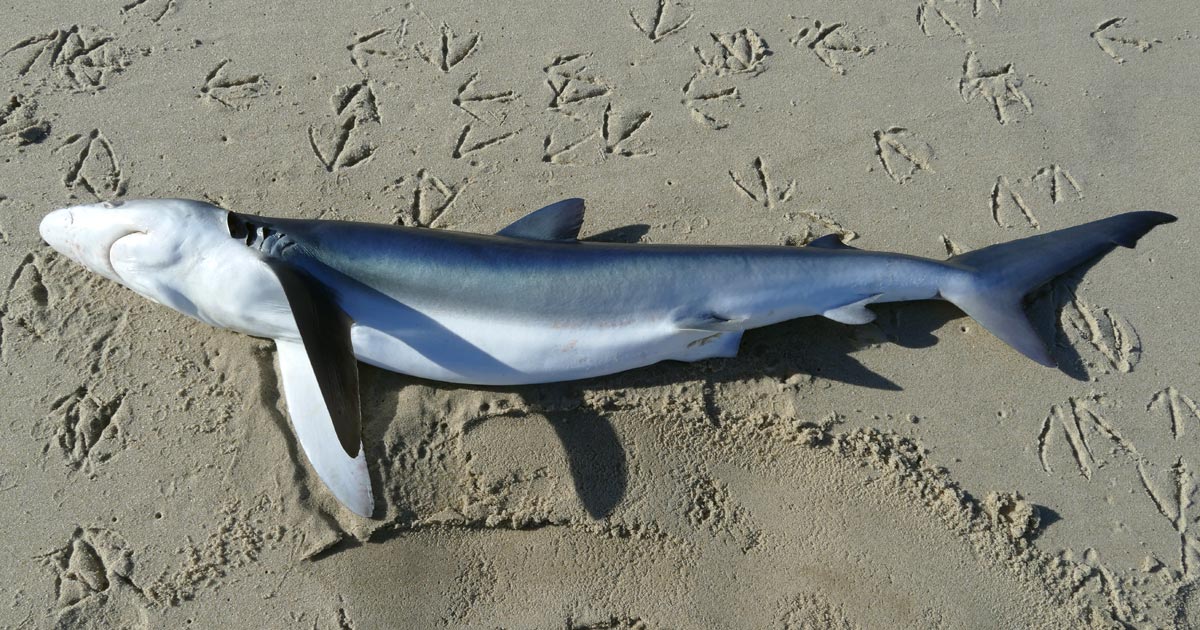
Like many other shark species, Blue Sharks are countershaded. In this species the top of the body is a brilliant deep blue, lighter blue on the sides, and the underside is gleaming white. It’s a fleeting glimpse. Once on the beach, the colours soon fade.
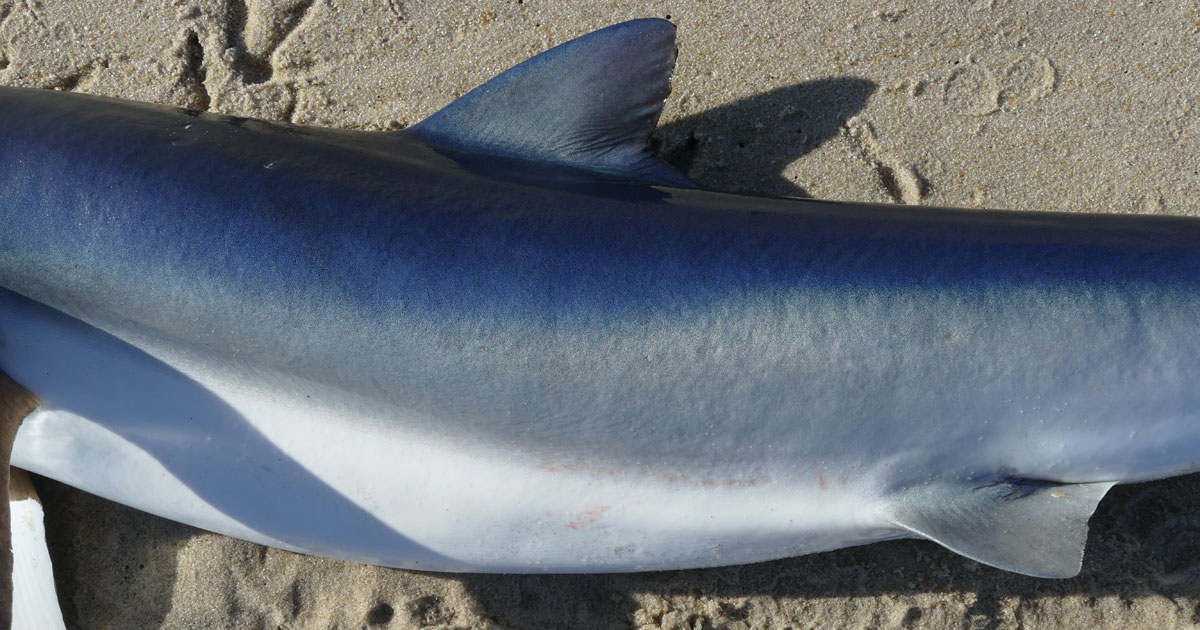
Posted on Facebook, November 3, 2021
On Sable Island, with the erosion and retreat of a high south beach dune, the remains of a shipwreck has been exposed. This was a very slow process. The first pieces of rusted iron and stained wood appeared in the early 1980s. As more of the wreckage emerged, its upright and pointed parts became well-used as rubbing and scratching surfaces for horses in the area.

Over the years, tangles of rope and net debris carried in by storm waves have caught up on the wreck. The last ship lost during the “shipwreck era” on Sable Island was the “Manhasset” in 1947. The life-saving service, established in 1801, operated until 1958. Aside from what’s left of old structures at the East Light site, this vessel fragment is presently the most visible piece of the island’s shipwreck history.

Posted on Facebook, November 2, 2021
A sunny day on Sable Island, with a northwesterly wind peaking at 25 knots, and a maximum temperature of 12.2°C. A band of horses is resting in the lee of one of the many small dunes that have been building up on the Sandy Plain during the past 25 years. As the dunes develop, they provide additional shelter and grazing areas for the horses. The extensive flats between these relatively new dunes were flooded with seawater a week ago when the waves washed over the south beach during the last storm.

Posted on Facebook, November 1, 2021
During the first day of November on Sable Island, it was mostly sunny with a maximum temperature of 16°C. In the morning, two adult Harbour Seals were hauled out on the north beach in their usual area near the entrance to the road leading into the Sable Island Station.
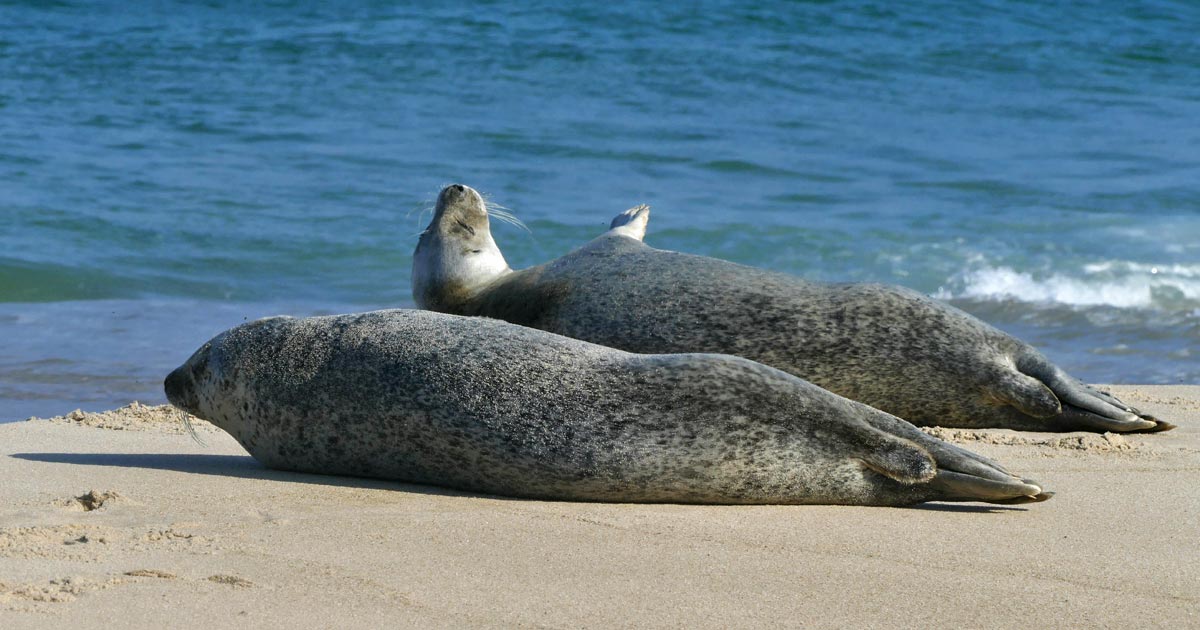
This summer, during a count of Harbour Seals on the north and south shorelines between the east and west tips, only five adults and one pup were found. Sable’s Harbour Seal population has been in decline since the early 1990s (in 1989 >600 pups were born). However, the throngs of the larger and noisier Grey Seals are abundant.

Posted on Facebook, October 31, 2021
Found washed ashore on Sable Island, a “Frozen Olaf Toddler Bean Chair”, described in the catalogue as a “fun and functional bean bag chair, made of durable 100 percent polyester fabric”. It is also filled with polystyrene beads (EPS, expanded polystyrene).

After drying, this Olaf’s beads were removed, bagged, and weighed. Based on the weight of a counted sample (600), this bean chair contained >260,000 beads. Had it broken open while adrift in the ocean, all the EPS beads would have escaped to join the burden of plastic particles in the marine environment, some eventually being ingested by seabirds and other marine animals.

Posted on Facebook, October 30, 2021
A drift line (also called wrack line) is an accumulation of debris left on the beach by high tide. On Sable Island, drift lines generally include natural materials (e.g., shells, bones, feathers, algae, twigs, and fragments of driftwood) and bits of plastic and other synthetic debris.

In a recent drift line along the north side of West Spit, shells of Northern Moon Snail and Rock Crab were most abundant with fewer shells of surf and razor clams, mussels and whelks, and Grey Seal bones, and a plastic ball. A search of the pile would reveal many smaller pieces of plastic.

Posted on Facebook, October 29, 2021
On Sable Island, after three days of high winds and heavy rain (about 53 mm total), conditions improved today. The wind diminished (with gusts dropping to below 25 knots compared with more than 40 knots yesterday) and less than 2 mm of rain fell. This afternoon, after grazing for a few hours, a family band of five horses returned to one of the shelter areas they had used during the storm, a gentle west-facing slope where they rested and engaged in some mutual grooming. The chestnut with the blonde mane is the band stallion.
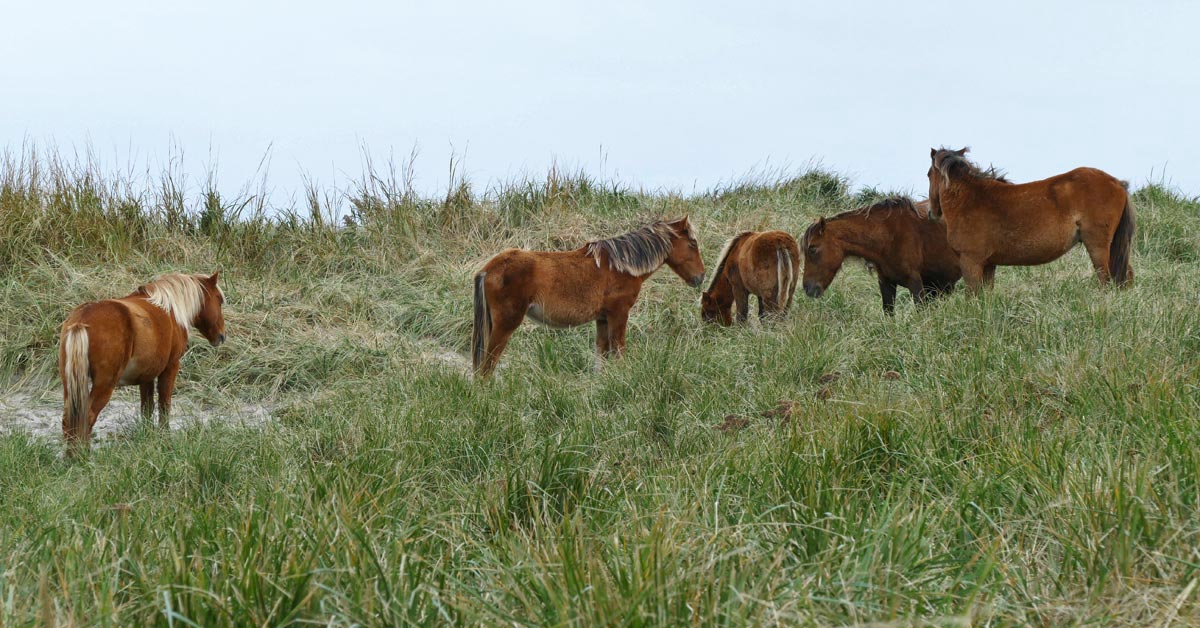
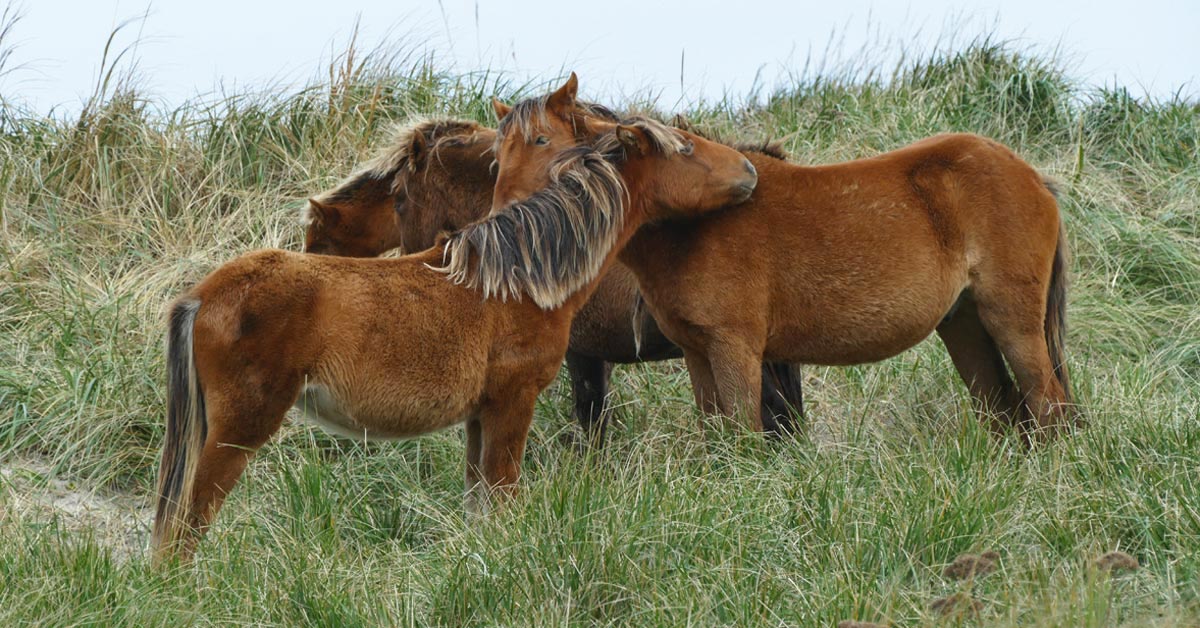
Posted on Facebook, October 28, 2021
For three days in a row, winds gusting to 40 knots or more have been sweeping across Sable Island. But there were many fine days during October, some so pleasant that horses were splashing in the surf.
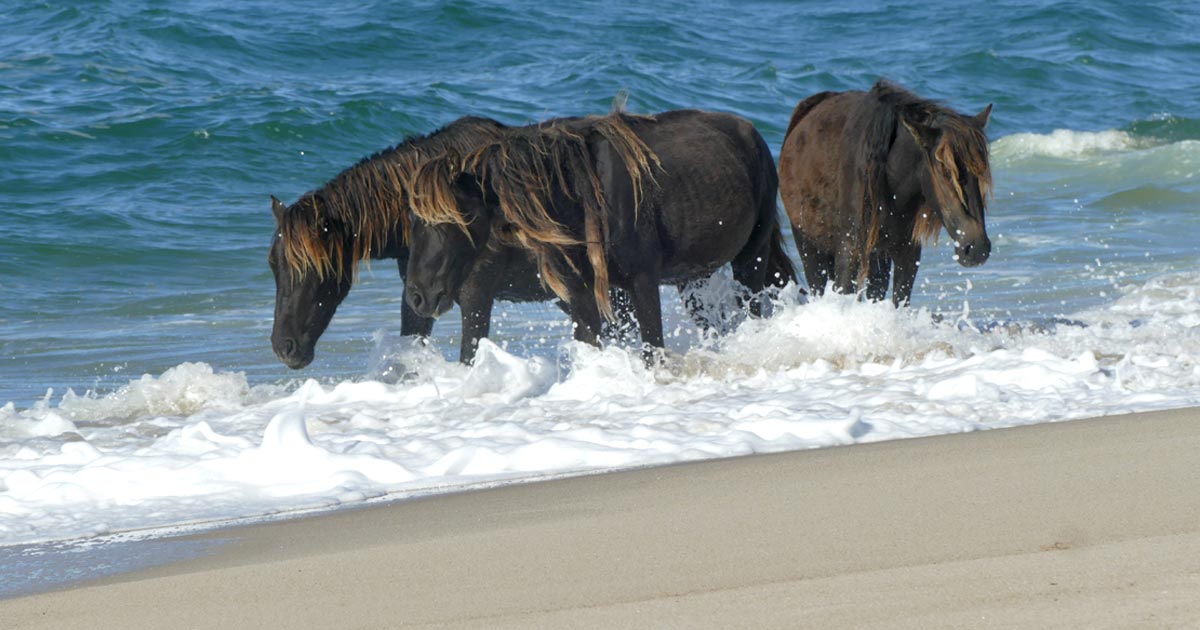
I was doing a survey for beached plastics, and about three minutes past the wading horses, found a plastic toy recently washed ashore: “Surfer Dude Hossegor Hank”, a self-righting & self-surfing toy “for kids & adults”. But when adrift in the ocean, such toys are plastic pollution. There were a lot of bite marks on the board indicating that fish had been investigating it, perhaps as a potential food item. By weight, Hossegor Hank was equal to 40 plastic spoons or 143 plastic straws.

Posted on Facebook, October 27, 2021
A Northern Oriole and a Lincoln’s Sparrow on Sable Island. During soggy weather last week, a few birds took shelter in a thicket of wild rose and driftwood, and some were eating the rosehips. The weather today has been wetter (35 mm of rain since yesterday) and much windier (gusting to >40 knots).
The Northern Oriole is still here, and this afternoon the bird came to the window on five occasions, knocking on the glass and looking in, perhaps seeking a slightly cozier place to perch.

Posted on Facebook, October 26, 2021
An overcast and gloomy late afternoon on Sable Island. While working at the desk, entering the day’s bird observations into a spreadsheet, I heard a thump. Just outside the window, a juvenile Peregrine Falcon had landed on the edge of the porch roof. I don’t know if the bird could see me on the other side of the glass, but it seemed to be staring in my direction—just in time to be added to the bird list for October 26.
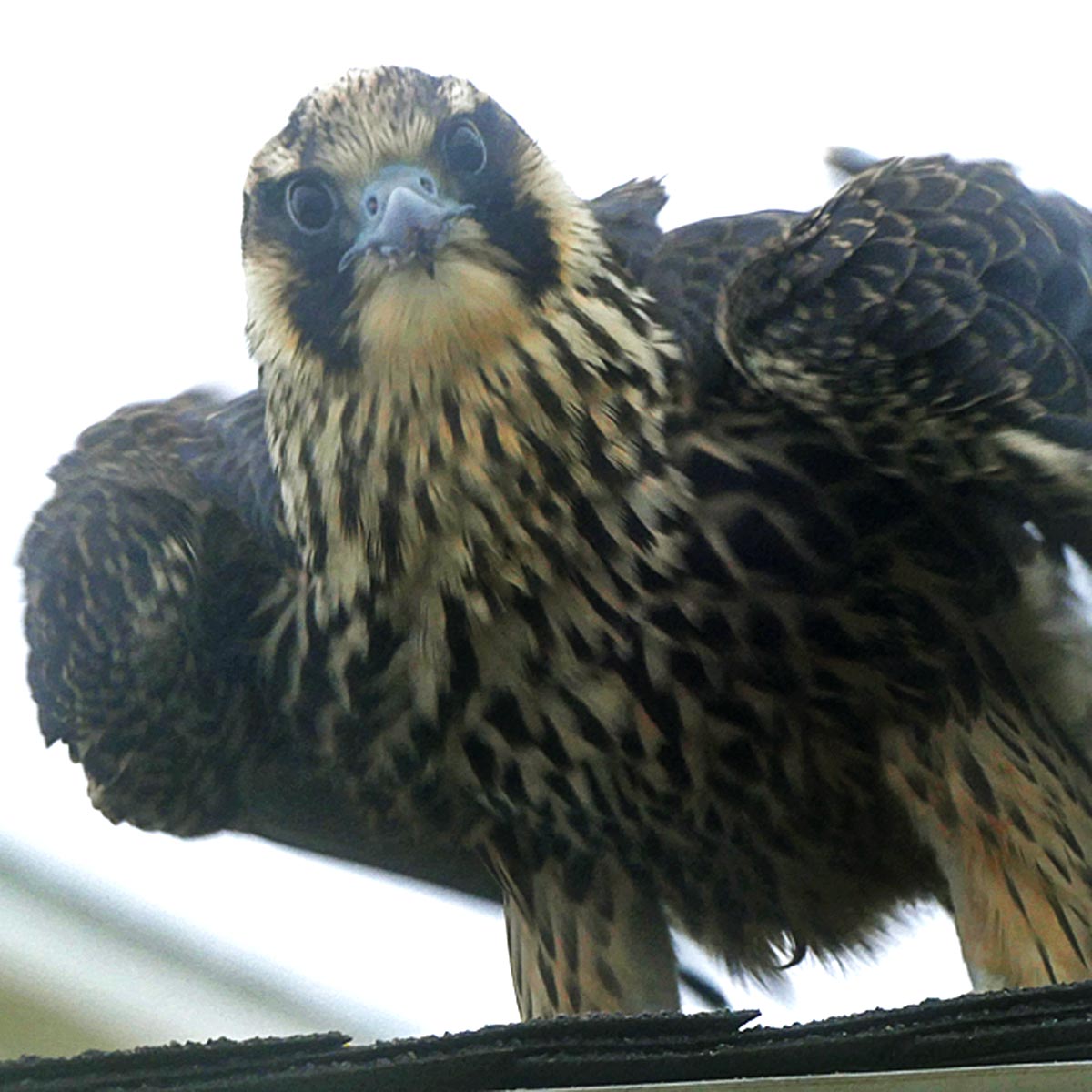
Zoe Lucas, Sable Island Institute
October 26 – November 28, 2021
For Zoe’s other series of Facebook posts, see:
Series No.1, Posted on Facebook, June 8 – July 11, 2o2o
Series No.2, Posted on Facebook, October 9 – November 7, 2020
Series No.3, Posted on Facebook, November 8 – December 12, 2020

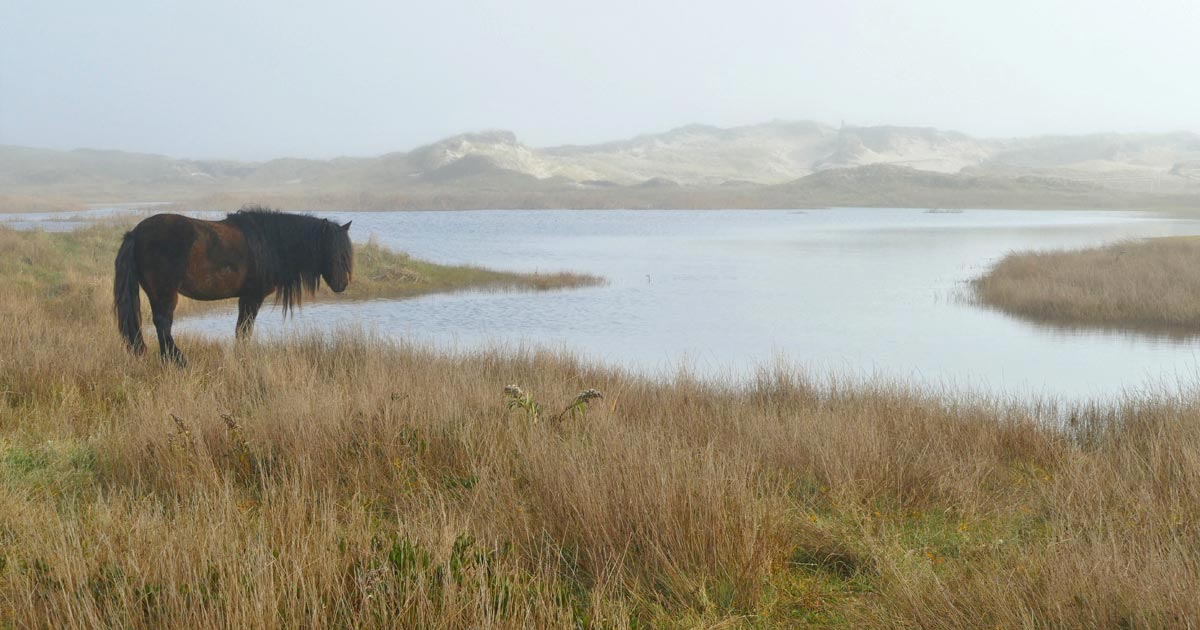
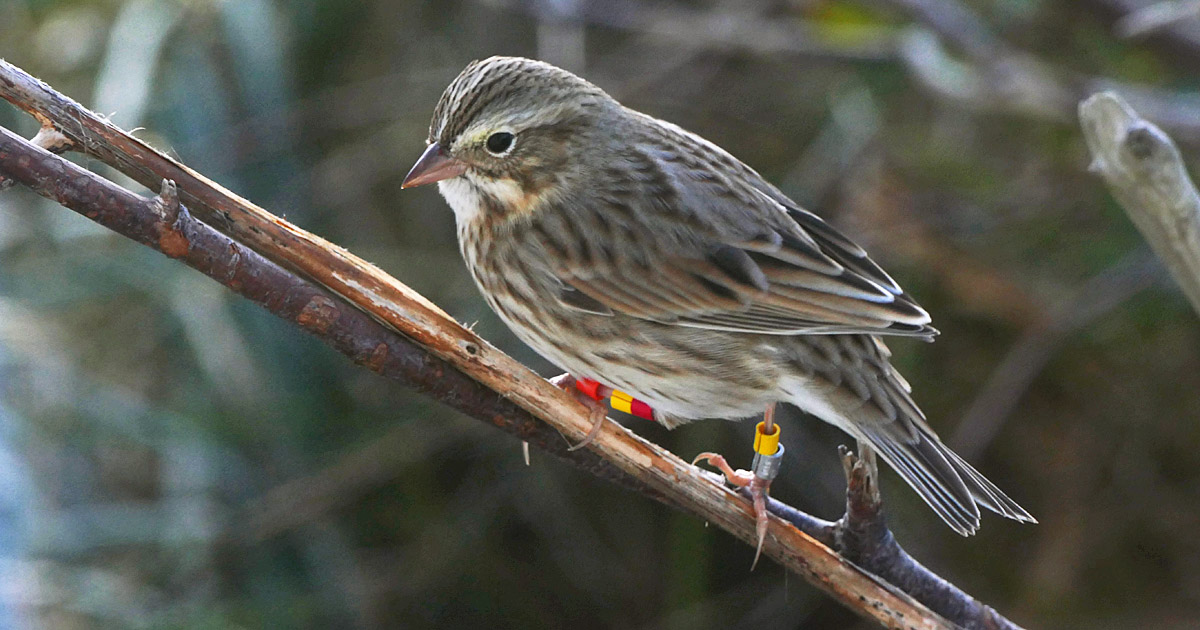


3 Responses
Zoe, Loved this issue! Fantastic photos and interesting and informative text. I had never heard of a ‘fog bow’. You indeed have a special place to live!
All the best in 2022 personally and professionally! Stay safe.
Grace
Nice to see what I’m missing, thanks Zoe.
Thank you! If you ever should want a beach sweep on the island, please count me in!